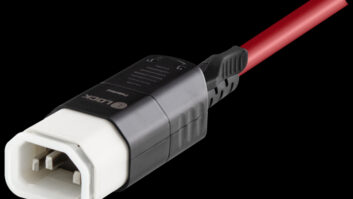Here’s the best part: the SBA promised 36-hour turnaround once a completed low-doc loan package is received from the bank.
ASK 10 SMALL-BUSINESS OWNERS TO tell you the most frustrating aspect of running their businesses, and it’s likely that at least eight of them will say, “Financing.” Obtaining adequate funding to meet day-to-day working capital, inventory and facilities needs is a major challenge.
Of course, the place to start when you need a small business loan is your bank. Most businesses don’t need a tremendous amount of outside financing to start or sustain the venture. In fact, many start with less than $25,000 in working capital. However, many conventional bank loans aren’t well suited for small amounts (micro-loans) or for financing new businesses.
If you have already tried your bank without success, don’t despair. There are a number of special loan programs out there that are good for small businesses. Some are designed for loans of up to $100,000 or more, while others can address the micro-loan needs that often arise in a small business.
SBA LOW-DOCUMENTATION LOAN PROGRAM
The Small Business Association has been offering guarantied loans to U.S. small businesses since 1953. The SBA has offered the 7(a) guarantied loan program for a long time, with annual volume in recent years averaging around $10 million. However, it wasn’t until July 1994 that the SBA offered its Low-Documentation Loan Program, initially for small-business loan requests of under $100,000 (and now up to $150,0000). Since that time, the government agency has seen an unprecedented success story unfold.
“The low-doc program has made it easier than ever to get smaller loans,”says Mike Stamler of the SBA.
“Before the low-doc program, it wasn’t cost efficient for lenders to do the paperwork for a loan under $150,000,” says Mike Stamler, SBA spokesman. “The low-doc program has made it easier than ever to get smaller loans. It has proven to be extremely popular both with small businesses and banks.”
Stamler’s point is supported by the numbers. In 1999, the SBA guarantied 11,413 low-doc loans totaling $852 million. This represented over 25% of the total SBA 7(a) guarantied loan volume for the year.
How the Low-Doc Program Works. As with other guarantied loans, the borrower works with his bank in formulating the loan request. The bank then submits the request to the SBA. The SBA guaranties the bank for up to 80% of the loan amount if under $100,000 and up to 75% for loans in excess of $100,000. The objective of the low-doc program is to emphasize the borrower’s character, credit history and projected cash flow, while placing less significance on percentage of equity and collateral.
Dick Rosentiel, director of small-business lending for Today’s Bank in Rockford, Illinois, explains, “The SBA’s underwriting parameters for this program involve the same characteristics that we look for in small-business, tier-one loans. And the SBA has emphasized simplicity and rapid turnaround on loan requests, two things that have been greatly lacking in the past.”
The simplicity of the low-doc program has been the key to its success. The documentation requirements are far more manageable than those for a standard SBA-guarantied loan request. For a low-doc loan, the SBA requires only a completed 1-page application, along with some historical financial information on the business and the owner. And here’s the best part: The SBA promises 36-hour turnaround time once a completed low-doc loan package is received from the bank.
Start-ups and existing small businesses are eligible for low-doc loans. For an existing business to be eligible, it must employ fewer than 100 employees and have under $5 million in average annual sales for the preceding three years. As with the standard guarantied loan program, proceeds may be used to finance working capital (up to seven years for the repayment term), machinery and equipment (up to 10 years) and real estate (up to 25 years).
The interest rate is negotiated between the borrower and the bank, but may not exceed Wall Street Prime plus 2.25% for loans that carry a term of less than seven years, and prime plus 2.75% for loans of seven or more years. A 2% guaranty fee is also collected by the SBA when the guarantied portion is $80,000 or less; a 3% guaranty fee is collected when the guarantied portion is over $80,000.
SBA WOMEN’S PRE-QUALIFIED LOAN PROGRAM
Another relatively new loan program for the SBA is the Women’s Pre-qualification Loan Program. Stamler says the reason this program was started is simply that “the SBA seeks to improve on the number of loans to women-owned businesses.”
According to SBA literature, this program “allows a woman-owned business to receive pre-qualification from the U.S. Small Business Administration for a loan guaranty before going to a bank.” The key word here is before.
The women’s loan program is the only SBA-guarantied loan initiative that allows the borrower to go directly to the SBA for approval. The bank becomes involved only after the SBA has signed off. This is a big advantage in that a bank is more likely to consider a request for a young business that already has an SBA guaranty.
How the Women’s Pre-qualified Program Works. The Women’s Loan Program focuses primarily on the borrower’s credit history, character and experience. Consequently, there are no stated minimum equity or collateral requirements.
The maximum loan amount in the women’s program is $250,000. The SBA will provide the bank with a guaranty of up to 80% on loans up to $100,000 and up to 75% on loans between $100,000 and $250,000. To be eligible, a small business must be at least 51% owned, operated and managed by women, have annual sales not exceeding $5 million and employ fewer than 100 people.
For loans under $100,000 the SBA requires only that the borrower submit a 1-page application. For loans of $100,000 to $250,000, the borrower must submit an expanded application, resumes on the principals, a copy of the most recent yearend business financial statement or tax return, and a personal statement. The restrictions for maximum interest rates, fees, terms and uses of loan proceeds are the same in the Women’s Loan Program as in the standard guarantied loan program and the low-doc program.
SBA MICRO-LOAN PROGRAM
Started in 1992, the SBA Micro-Loan Program makes funds available to non-profit intermediaries, who in turn extend financing to local small businesses. Loan amounts range from $100 to $25,000 with an average loan size of $10,000.
The maximum term allowed for a micro-loan is six years, depending upon the size of the loan, the planned use of the funds and the requirements of the intermediary lender. Interest rates are generally competitive and are set by the intermediary lender. As with collateral, any assets purchased with the loan proceeds will be required to be pledged. And the small-business owner will be expected to provide a personal guaranty.
The SBA provided 1,466 micro-loans totaling $17 million in 1999. Stamler says the program has helped truly small businesses unable to obtain credit from conventional sources. “These sorts of loans are more appropriate for people who generally are not considered bankable. It’s usually not a question of the loan being too small for a bank to deal with. In the absence of the program, most of those borrowers would not be getting loans from banks anyway.”
To find the closest micro-loan intermediary near you, or for more information on SBA’s special loan programs, check out www.sba.gov or call the SBA Answer Desk, 800/827-5722.
OTHER MICRO-LOAN PROGRAMS
The SBA is not the only entity that offers small-business loans. Many local and state governments have similar loan programs. Though not well-known, many are ideal for the small business owner who needs up to $25,000 to start or sustain a venture. One such program is in North Carolina, the Micro-Enterprise Loan Program of Winston-Salem, Forsyth County, Inc.
MELP was initiated four years ago by a consortium of eight banks, two large corporations, a local foundation, and the city and county governments. MELP initially targeted loans of $5,000 or less for minority- and women-owned businesses. Within a year, however, the program was expanded to include all small-business owners for loans up to $20,000.
The typical MELP loan has been about $7,500 with a 2- to 3-year payback, a great fit for just about any small business. There are micro-loan programs all over the country. Some (like MELP) even offer grants. To find out more about local micro-loan programs, contact your local municipality.
If you are in need of a small amount of outside financing for your small venture, some of these programs will hopefully provide options for your needs. There is hope if you know where to look, whether you need $1,000 or $100,000, to make your small business successful.
J. Tol Broome, Jr. is a freelance business writer from Greensboro, North Carolina. He has been in banking for 18 years and currently is a regional loan administrator with BB&T in Winston-Salem, North Carolina.










